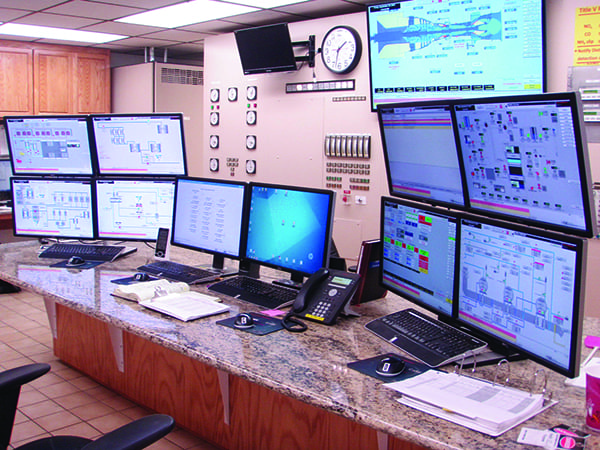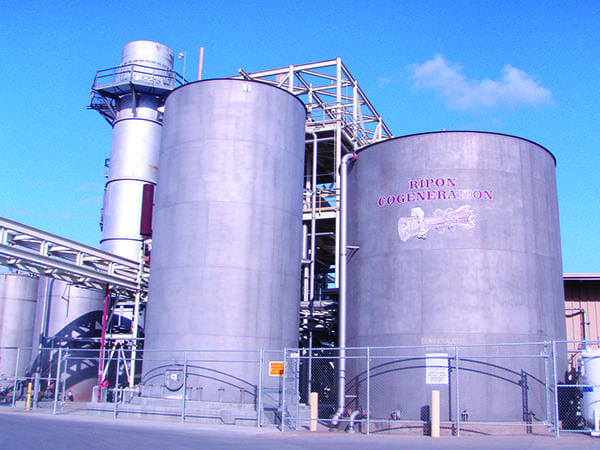Although it may seem as if gas turbines have only recently become the technology of choice for new U.S. power plants, a lot of gas turbine units have been in service for decades. Control systems have evolved greatly since many of those turbines were commissioned. Modernization presents an opportunity to mitigate the risks of legacy systems and help improve business performance long term.
Despite the surge in new natural-gas power capacity that has been built since 2000, many older simple cycle and combined cycle gas plants remain in use, some dating back to the 1950s. The need for station and unit control reliability is critical in these decades-old plants, especially as power producers seek to maintain competitive and profitable plant operations amid declining peak generation prices. But their aging or obsolete systems, combined with the lack of operational and diagnostic information available in those legacy systems, can make excellent reliability control elusive.
As a result, these plants experience a greater risk of production stoppages and downtime. They are more likely to face support challenges and difficulty with maintaining regulatory compliance, and they spend valuable time and resources performing manual data collection and reporting.
Modernizing to a contemporary, whole-station, unified control system can alleviate these challenges and facilitate tighter integration between unit control and associated subsystems.
Making the Case for Modernization
Modernization is a big-picture effort that involves more than migrating from an old legacy system to its modern equivalent. It requires rethinking applications and upgrading multiple technologies. But in the end, it can transform a plant's processes and help reposition its operations for the next 20 to 30 years.
For example, by modernizing old or obsolete automation systems that make up only a fraction of plant capital costs, power producers can more efficiently manage their assets to help improve their bottom line, and they can leverage advanced analytics to monitor and optimize multiple plants across their fleet.
The power-generation industry has long been a leader in data collection and analytics. Modernization continues that history by tapping into the power of the Internet of Things (IoT). Linking production data to information systems, for instance, gives power producers access to real-time metrics and predictive insights into virtually every aspect of a plant's operation. This improved visibility can help producers increase reliability, reduce maintenance, achieve more precise control, and improve diagnostic capabilities.
The key for plants undergoing modernization is to understand not only what new technologies they should upgrade to, but also what business improvements they can deliver (Figure 1). This is especially important in today's competitive world of generation, where justifying capital spending on automation is becoming more challenging and requires a solid business case.
Improve Startup Reliability
Reliable startups can help plants operate more efficiently and be more responsive to fluctuating energy market prices.
One industrial power plant was hindered by slow startups of its turbine control system. Starting and synchronizing the turbine generator was a manual process that involved three operators. The workers had to communicate via radios and coordinate their actions in an attempt to achieve a safer and more reliable startup process.
EthosEnergy, a service provider that supports gas turbine plants, worked with the plant to upgrade the control system. A key element of the upgrade was the addition of an automatic start-and-synchronization sequence to the system. With this feature incorporated, the startup process now requires only one operator, who can do the job from the safety of the control room.
In another instance, a utility power producer was operating three gas turbines that used a 50-year-old control system. After decades of use, the control system's components were aged and unreliable. As a result, the plant's starting reliability was operating at about 50%, which created significant economic problems for the producer.
After working with EthosEnergy to upgrade the control system, the power producer saw starting reliability jump to greater than 90%. Since the upgrade, the site has experienced no failed starts due to the control system.
Improve Operational Efficiency
Aging systems can also impact operations in a power plant and add additional risk, as was the case for a California-based cogeneration plant.
Its obsolete distributed control system (DCS) could no longer maintain performance, with spurious trips and time-consuming restarts slowing down production. Manual production reports were taking one to two hours to produce every day, and very few workers in the plant understood the legacy system, which was supported only on a very limited basis by the original vendor.
To resolve these issues and improve efficiencies, the plant upgraded its control and information infrastructure (Figure 2). This included transitioning to an information-enabled and scalable DCS platform that combined process and safety control with communication and state-of-the-art input-output devices. A new process historian also provided improved access to real-time and historical data, and automated reporting capabilities.
Additionally, the plant replaced its old proprietary network with EtherNet/IP to help ease installation of the new system and smoothly integrate it with existing subsystems. Furthermore, the new open network allows the plant to easily expand in the future and take advantage of new Ethernet-based devices or equipment.
Once implemented, the new and fully integrated automation control system enhanced overall performance at the plant. Nuisance fail-safe events have dropped by nearly 90%, while startup times have improved by 25%. Fewer shutdowns also have helped the plant keep emissions well within check, which has helped ease regulatory compliance.
Plant personnel can now use role-based dashboards with real-time insights into production to more easily monitor process variables. For example, operators now have visibility into the gas turbine's inlet air temperature and what affects it, which allows them to proactively respond to changes and improve productivity. They also can use new insights into certain process variables to determine if they can ride through small aberrations or need to perform a complete shutdown.
Secure Implementation
The nature of power plant operations is evolving and so are the security risks. More-connected operations allow plants to converge previously isolated systems and convert raw process data into actionable production intelligence. But all this connectivity can create potential entrance points for industrial security threats that can take many forms, including physical or digital, internal or external, and malicious or unintentional.
When upgrading gas turbine controls, plants must address a number of industrial security concerns, including:
■ Helping protect their valuable intellectual property.
■ Helping prevent intrusions that could impact productivity, worker safety, or the environment.
■ Maintaining critical systems on which populations depend.
■ Avoiding network-related downtime.
■ Securely allowing remote access to their operations.
Power-generation and distribution systems make up an important part of critical infrastructure. The North American Electric Reliability Corp. (NERC) Critical Infrastructure Protection (CIP) standards were developed to help protect them. At the foundation of the standards is the principle that industrial security must be holistic, and a security assessment is key to the right approach. A security assessment can help a power plant understand where risks and areas of vulnerability exist, and identify the mitigation techniques that are required to bring operations to an acceptable risk state.
Once the assessment is complete, a defense-in-depth security approach should be implemented. Based on the notion that any one point of protection can and likely will be defeated, defense-in-depth security uses physical, digital, and procedural safeguards to holistically establish multiple layers of protection across an organization.
Holistic security applies to a power plant's security efforts, and to those of its vendors and partners. Therefore, plants should make a point to only work with trusted vendors that follow specific security principles when designing products.
There is an abundance of available industry resources that power producers can take advantage of to help bolster their security efforts. Converged Plantwide Ethernet (CPwE) reference architectures from Cisco and Rockwell Automation, for example, provide useful guidance for managing network-access security and addressing unknown risks.
Powering a Better Future
By modernizing aging or obsolete gas turbine controls, power plants are simultaneously abandoning the shortcomings of their legacy technologies and tapping into the potential of smart technologies. Moreover, by embracing a holistic approach to security, they can put their operations in line with industry best practices to help protect assets, employees, facilities, and competitive advantages. ■
–Tom McDonnell is North American power generation industry leader with Rockwell Automation.


